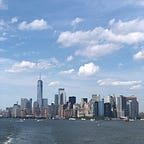Why Legal Regulators Love Billboards
Author’s Note: No personal injury lawyers were harmed in the making of this post.
Legal industry regulators have repeatedly cited “public protection” to justify pushing forward with the bar exam in the middle of a pandemic. Some states are holding it in person though large gatherings are literally killing people while others have tried to switch to an online service plagued thus far by a host of technical problems. Widespread criticism and suggested alternatives by applicants, practitioners, academia, and state legislators have been largely ignored. There is no empirical evidence of the exam actually protecting the public from unfit attorneys and state bars have otherwise failed to justify their intransigence. The judges and bureaucrats who make the rules enjoy an absence of meaningful oversight that makes eschewing explanations easy. However, the few responses offered — most notably baseless accusations of harassment and threats of retaliation by the inexplicably-still-employed president of the National Conference of Bar Examiners, Judy Gundersen —and a callous indifference to the economic hardship now impacting thousands of would-be lawyers demonstrate that the bureaucracy is far more concerned about self-preservation than public protection.
The bureaucrats’ public protection arguments can be easily dismissed as canards by those familiar with the industry. But they resonate with most people, who already perceive lawyers as greedy, dishonest, and unscrupulous. Regulators perpetuate these negative stereotypes because it keeps their bureaucracies seemingly relevant. For example, the bar exam does not test fitness to practice law. But Boards of Law Examiners want a public already innately distrustful of attorneys to think it does (even though multiple NCBEX presidents have been licensed via diploma privilege as there is apparently no ethical prohibition on hypocrisy, at least in Wisconsin). They portray each failed test as representing another unworthy individual from whom the people have been spared. Accordingly, the public perceives BLEs as doing important work for the common benefit. In reality, they are as effective of saving anyone from anything as Don Quixote. The bar exam provides the public nothing more than a false sense of security, but the perception has empowered state supreme courts and bureaucrats to go to remarkable lengths to administer the test while disregarding the health, safety, and financial well-being of thousands of applicants.
This phenomenon might also explain why bureaucrats who insist on micromanaging so many aspects of the profession (literally to the letterhead) have no problem with the proliferation to near ubiquity of billboards on expressways advertising the services of personal injury lawyers. Travelers and commuters are inundated with messages promising to monetize misfortune and “get you the money you deserve”. The promotion of legal services is usually closely-monitored by state grievance panels. Depending on the jurisdiction, advertisements come with a host of mandated disclosures and information. Even if these were required for billboards, drivers travelling at 65 or 70 miles-per-hour (or more) can hardly be expected to read them. Injury cases are as nuanced as any other and not every car accident or fall comes with a claim for damages. So why would regulators bent on public protection from even “the appearance of impropriety” permit billboards?
Plaintiffs attorneys rely on billboards to generate business in a very competitive industry sector, and members of that bar are not somehow more prone to unethical conduct than colleagues in other areas. A lot of potential clients need these services, and there is nothing to suggest that advertising on the highways somehow inures to the public detriment. Yet the relatively lax regulation of billboards is curious. Perhaps from a bureaucratic perspective, the advertisements are permitted because they are seen as reinforcing the negative lawyer stereotype of “ambulance chasers”, a portrayal that inures to the benefit of regulators needing someone to police. As long as these “ambulance chasers” stalk potential clients on the nation’s highways, only the noble bureaucracy stands between the unsuspecting and attorneys bent on malfeasance. Billboards are thus implicit advertisements for the regulators themselves.
Public protection may not be their actual concern, but it will be a key argument for bureaucrats who want to maintain the status quo out of self-interest. In each case, reformers must demand that state bars and supreme courts demonstrate empirically how rules, existing or proposed, impact those who need or use legal services. Had regulators adduced evidence of the bar exam’s efficacy in weeding out the unfit from the practice of law, the case for requiring its administration whatever the circumstances would be considerably stronger. But simply using the phrase “public protection” is not sufficient. At some point, it must be made plain that some bureaucrats are only protecting themselves.
